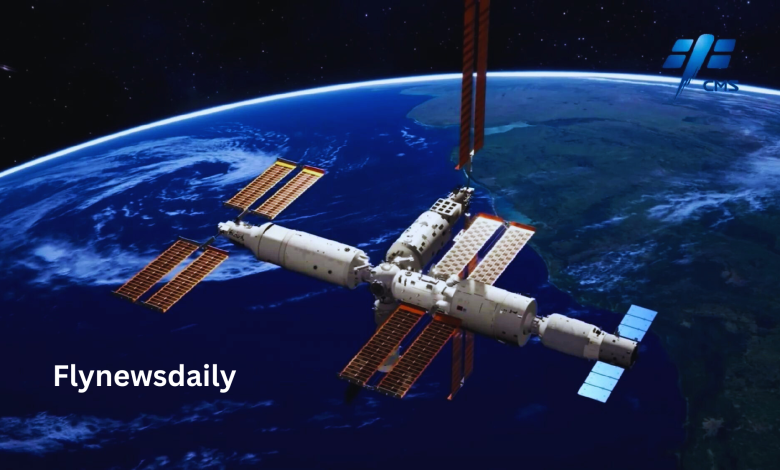
Recently, China’s rapidly developing space program achieved a significant milestone with the launch of a multi-mission satellite. This incident demonstrates China’s growing technological capabilities and space exploration ambitions. In this comprehensive overview, we discuss the objectives of the satellite launch, its technical details, and the implications for international space programs.
Historical Context of China’s Space Program
When China’s space program was established in the late 1950s, it started out small. From launching simple satellites to executing complex missions to the Moon and Mars, the China National Space Administration (CNSA) has come a long way over the years. The latest debut, the product of years of unwavering research, development, and international collaboration, demonstrates this forward-thinking trajectory.
Details of the Satellite Launch
China successfully launched a multi-mission satellite from the Wenchang Space Launch Center on [specified launch date May 30, 2024] on board the Long March 5B rocket. This cutting-edge satellite is intended to carry out a number of functions, such as communications, scientific research, and earth observation.
Key Objectives of the Multi-Mission Satellite
Earth observation:
To keep an eye on environmental changes, natural disasters, and urban development, the satellite is outfitted with high-resolution cameras and sensors. These skills are essential for resource planning and efficient catastrophe management.
Scientific Research:
The satellite, equipped with advanced instrumentation, will carry out microgravity experiments and provide significant data to the scientific community.
Telecommunications:
The satellite will improve internet and telecommunication services, especially in remote and underserved areas, by improving communication infrastructure.
Technological Innovations
The multi-mission satellite embodies several cutting-edge technologies that set it apart from previous missions. These innovations include:
Advanced Imaging Systems
Ultra-high definition images can be captured by the satellite’s next-generation imaging technologies. These systems are essential for precise monitoring of geological processes and climate patterns, as well as for thorough earth observation.
Enhanced Data Processing Capabilities
With onboard artificial intelligence (AI) and machine learning (ML) algorithms, the satellite can process data in real-time. This capability significantly reduces the latency between data collection and analysis, providing timely insights for decision-makers.
Improved Propulsion Systems
Equipped with advanced propulsion systems, the satellite can maneuver more efficiently in space. This feature extends the satellite’s operational life and ensures optimal positioning for various missions.
Launch Vehicle: The Long March 5B Rocket
The Long March 5B rocket, a cornerstone of China’s space launch fleet, played a crucial role in the satellite’s deployment. Known for its heavy-lift capacity and reliability, the Long March 5B has been pivotal in China’s major space missions, including the construction of the Tiangong Space Station.
Technical Specifications
- Height: 53.66 meters
- Liftoff Mass: 849 metric tons
- Payload Capacity: Up to 25 metric tons to low Earth orbit (LEO)
The rocket’s robust performance ensures the safe and precise delivery of the satellite into its designated orbit, paving the way for its multi-faceted mission.
Implications for Global Space Exploration
China’s successful launch has far-reaching implications for global space exploration. As the country continues to push the boundaries of space technology, it fosters international collaborations and competitive advancements in the field.
Strengthening International Partnerships
China’s space endeavors often involve partnerships with other nations, enhancing global cooperation. The multi-mission satellite will likely engage in collaborative projects with international space agencies, promoting shared scientific discoveries and technological advancements.
Boosting Competitive Innovation
The launch serves as a catalyst for innovation within the global space industry. Competing nations are encouraged to advance their own technologies and capabilities, leading to a more dynamic and progressive space exploration landscape.
Future Prospects and Missions
Looking ahead, China has ambitious plans for its space program. Upcoming missions include lunar exploration, Mars sample-return missions, and the expansion of the Tiangong Space Station. Each of these missions builds upon the technological advancements and successes of previous endeavors, including the recent multi-mission satellite launch.
Lunar and Mars Exploration
China’s lunar missions aim to establish a permanent presence on the Moon, with plans for a lunar research station by the 2030s. Mars exploration continues with the goal of collecting samples and furthering our understanding of the Red Planet’s potential for supporting life.
Expanding the Tiangong Space Station
The Tiangong Space Station will see additional modules and international collaboration, transforming it into a hub for scientific research and space exploration. This expansion will enhance our ability to conduct long-term experiments in space and develop technologies for future deep-space missions.
Conclusion
The launch of China’s multi-mission satellite represents a significant leap in space technology and exploration. With advanced capabilities in earth observation, scientific research, and telecommunications, this satellite will play a crucial role in addressing global challenges and expanding our understanding of the universe. As China continues to innovate and collaborate internationally, the future of space exploration looks promising and dynamic.



